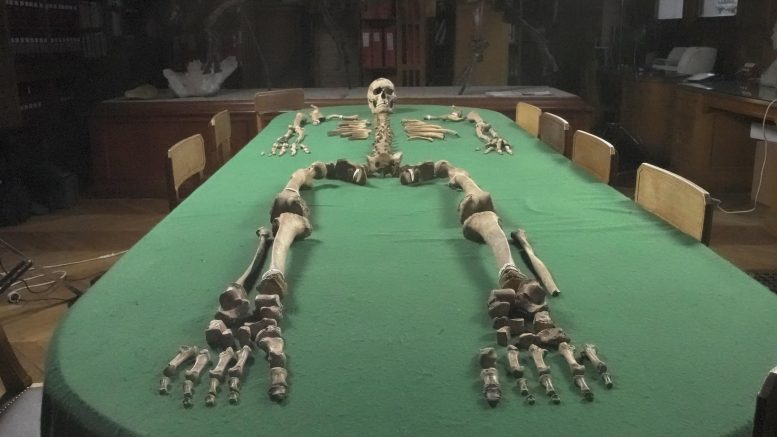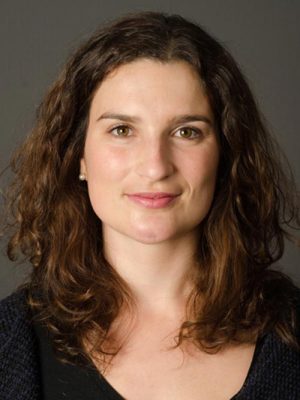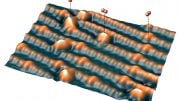
Remains of a man buried in a rich grave. In the paper, we write the following about K6: “Interestingly, and contrary to expectation, individuals buried together did not have close biological kin relationships. An exception to this pattern is the individual buried at the bottom of grave K in Téviec (K6(16)-tev003), who had closer biological kin links to at least two (sampled of a total of five) of the individuals buried above him, while these were not closely related with each other. This finding corroborates the importance and singularity that K6(16)-tev003 could have had based on the arrangement of the grave and associated archaeological material. Moreover, osteological analysis revealed two microlithic armatures, likely from a projectile weapon, punched in the sixth and eleventh dorsal vertebrae, the first of which may have resulted in immediate death by severing the aorta (1). His mandible also bore an old, well-healed fracture, which has been suggested as evidence of a lifestyle marked by a certain violence (26).”
Credit: Vivement Lundi! / France Télévisions; Image from “Téviec, Meurtre au Mésolithique” directed by Hubert Béasse.
Blood relations and kinship were not all-important for the way hunter-gatherer communities lived during the Stone Age in Western Europe. A new genetic study, conducted at several well-known French Stone Age burial sites, shows that several distinct families lived together. This was probably a deliberate system for avoiding inbreeding.
These findings are revealed in a new scholarly study led by researchers from Uppsala University in collaboration with several French institutions. The study is published in the journal PNAS.
In the study, the researchers have succeeded in obtaining biomolecular data from human skeletons buried at iconic sites in France, such as Téviec and Hoedic in Brittany, as well as Champigny. The remains were dated to the very last stages of the Mesolithic (approximately 6,700 years ago), when the last Western European hunter-gatherers lived, overlapping with the Neolithic, when settled farmers took over.
This is the first study analyzing the genome of several Stone Age hunter-gatherers from the same place who lived at the same time as and in the proximity of newly arrived Neolithic farming communities.

Professor Mattias Jakobsson, Department of Organismal Biology, Uppsala University. Credit: Mikael Wallerstedt/Uppsala University
“This gives a new picture of the last Stone Age hunter-gatherer populations in Western Europe. Our study provides a unique opportunity to analyze these groups and their social dynamics,” says Professor Mattias Jakobsson from Uppsala University, who led the study.
Insights Into Ancient Social Structures
Some 7,500 years ago, the last hunter-gatherer populations in Western Europe encountered incoming Neolithic farmers and were gradually replaced and assimilated. The coexistence of these groups has raised many questions about the extent to which they interacted.

Dr. Luciana Gaspar Simões, geneticist, postdoc at the Department of Organismal Biology, Uppsala University. Credit: Per Enström/Uppsala University
Earlier studies, based on isotope data, have suggested that the last hunter-gatherer communities deliberately assimilated women from the Neolithic farming community. This new study shows instead that the hunter-gatherer groups mixed with other hunter-gatherer groups but not with the Neolithic farmers.
“Our genomic analyses show that although these groups were made up of few individuals, they were generally not closely related. Furthermore, there were no signs of inbreeding. However, we know that there were distinct social units – with different dietary habits – and a pattern of groups emerges that was probably part of a strategy to avoid inbreeding,” says Luciana G. Simões, researcher at Uppsala University and first author of the study.
The research has been conducted in collaboration with researchers at several French institutions, including the University of Rennes in Brittany and the Muséum national d’Histoire naturelle (MNHN) in Paris. The well-known sites of Téviec and Hoedic in southern Brittany contain many graves where several individuals have been buried together. This is unusual at Mesolithic burial sites. It was previously assumed that being buried together meant individuals were biologically related.
“Our results show that in many cases – even in the case of women and children in the same grave – the individuals were not related. This suggests that there were strong social bonds that had nothing to do with biological kinship and that these relationships remained important even after death,” says Dr. Amélie Vialet from the Muséum national d’Histoire naturelle.
Reference: “Genomic ancestry and social dynamics of the last hunter-gatherers of Atlantic France” by Luciana G. Simões, Rita Peyroteo-Stjerna, Grégor Marchand, Carolina Bernhardsson, Amélie Vialet, Darshan Chetty, Erkin Alaçamlı, Hanna Edlund, Denis Bouquin, Christian Dina, Nicolas Garmond, Torsten Günther and Mattias Jakobsson, 26 February 2024, Proceedings of the National Academy of Sciences.
DOI: 10.1073/pnas.2310545121









“This was probably a deliberate system for avoiding inbreeding.
It seems that there is an unstated assumption about how much Mesolithic peoples knew about genetics before even becoming pastoralists. Incest taboos are more commonly used, albeit the rules vary widely across different societies and probably have more to do with emotional entanglements than an awareness of the role of recessive genes.